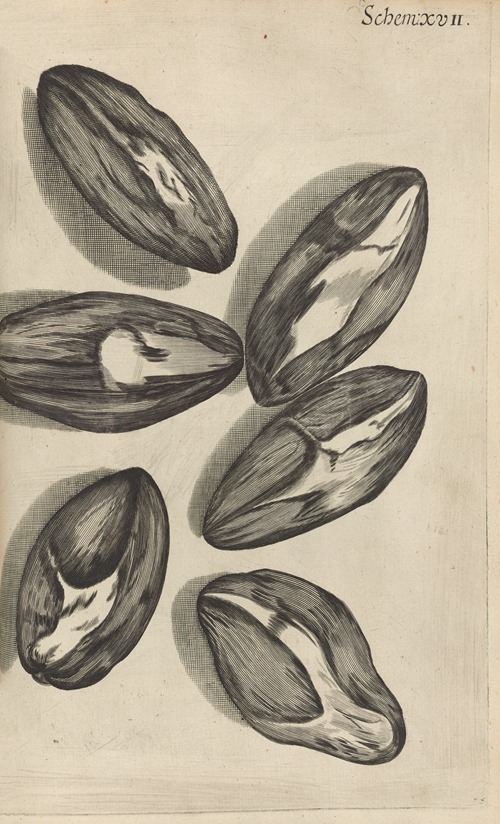
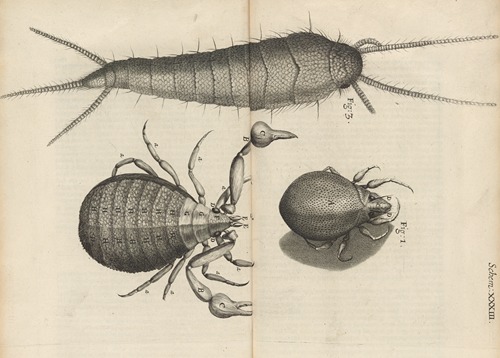
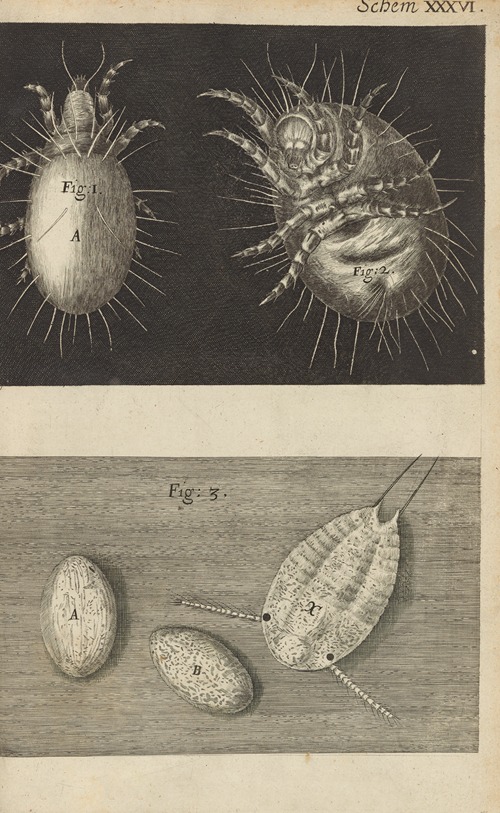
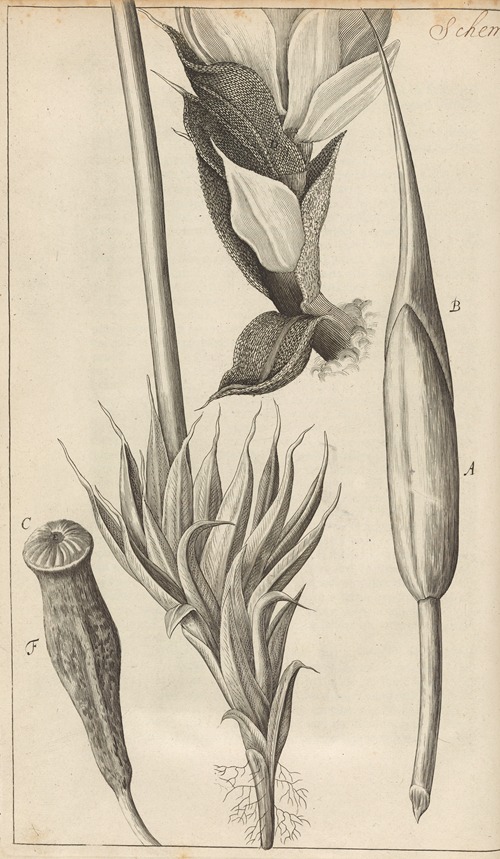
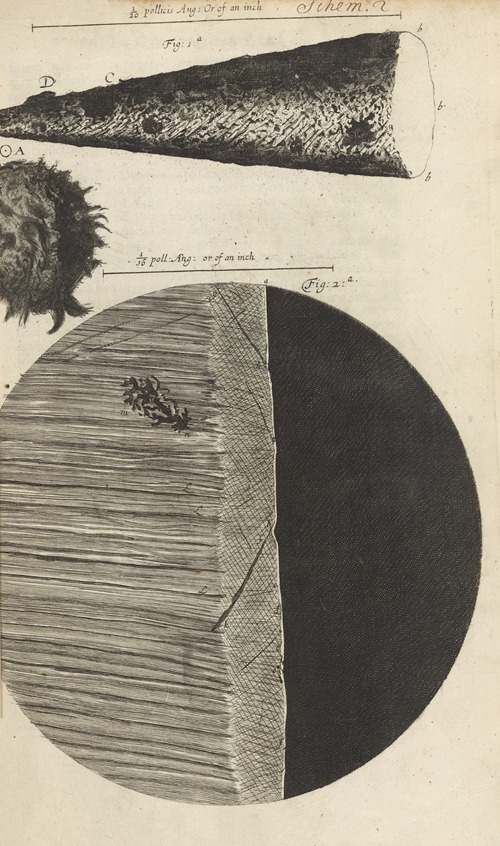
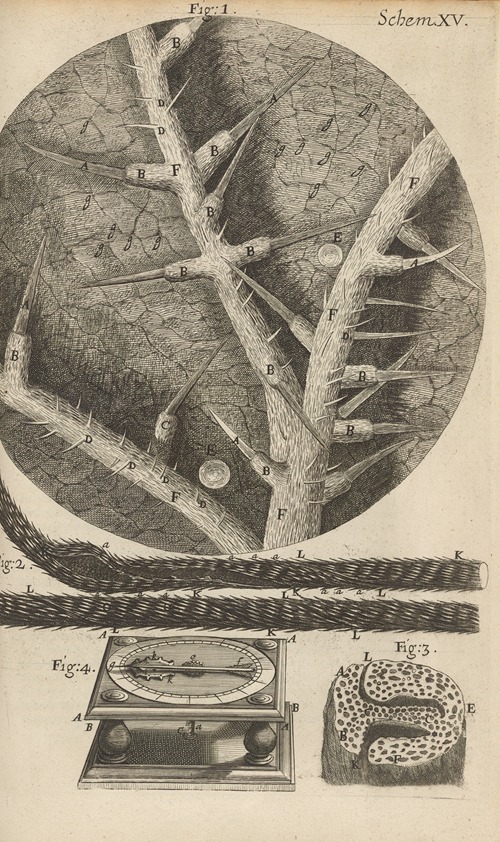
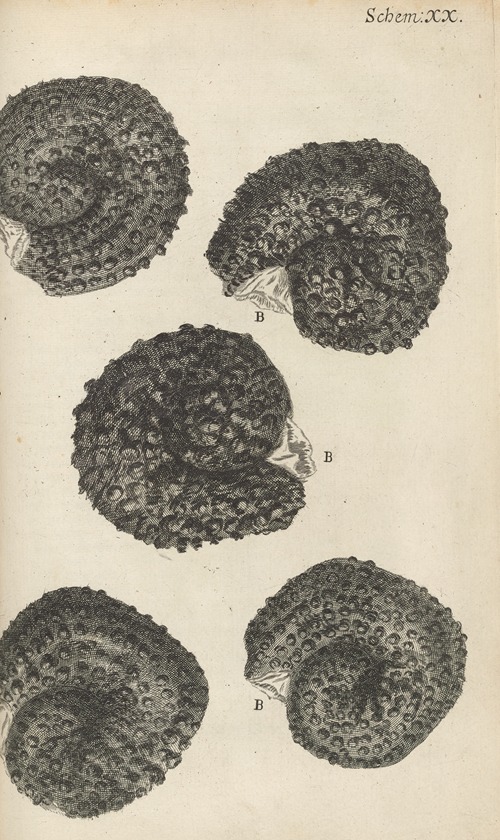
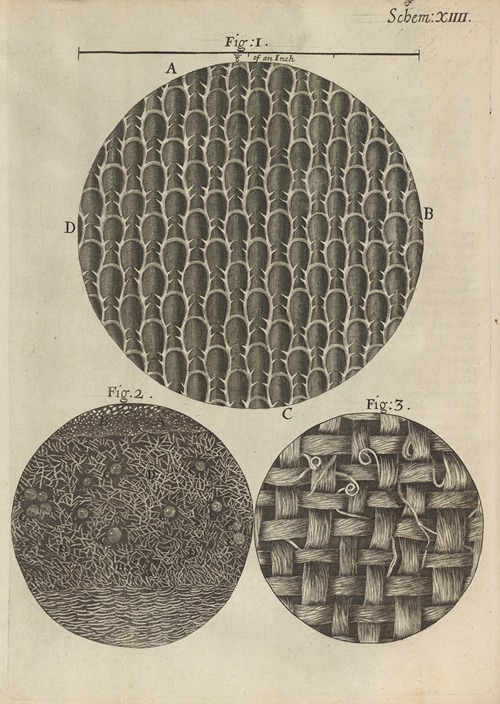
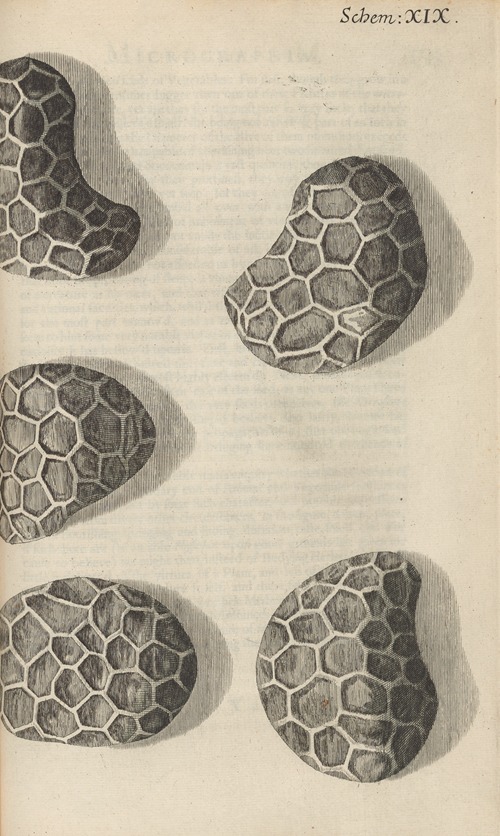
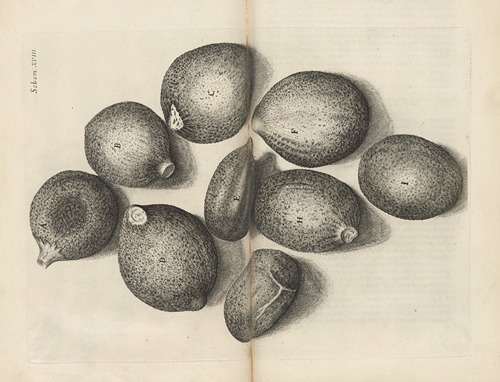
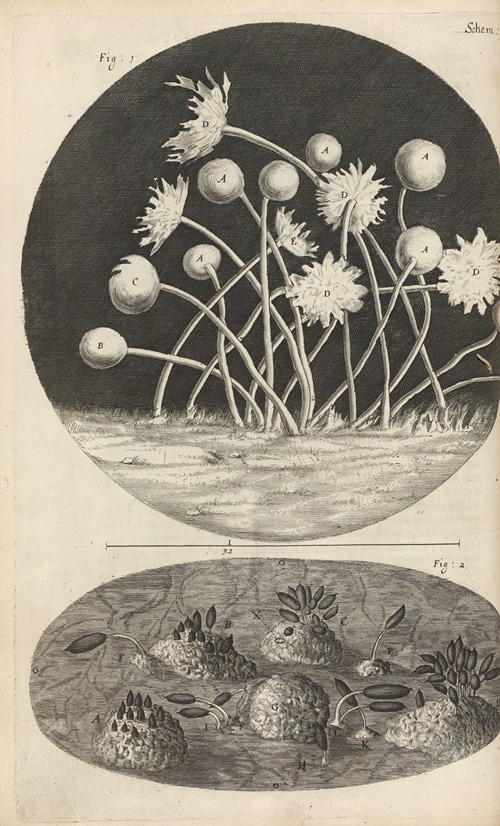
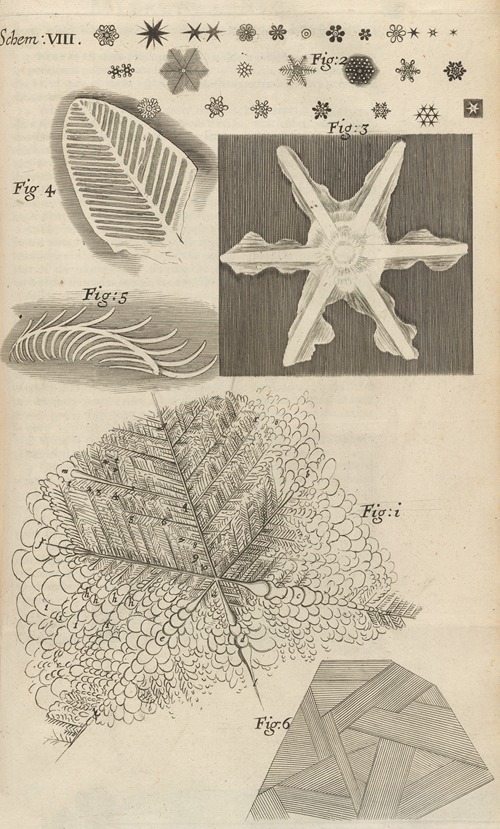
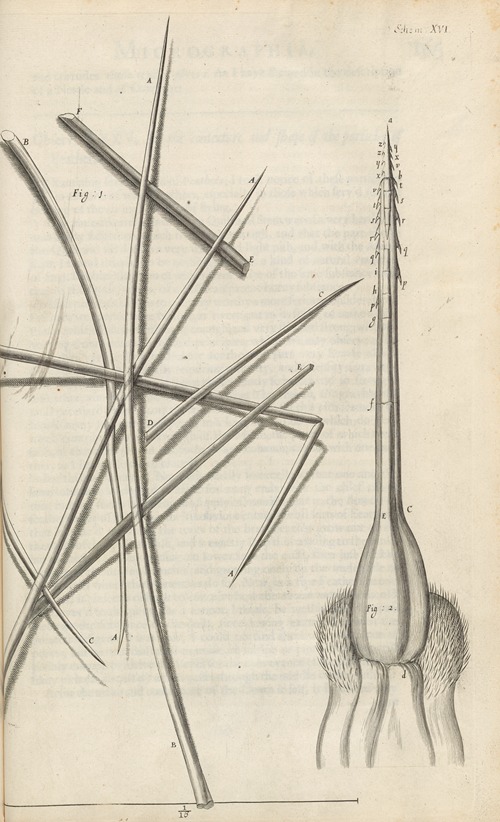
![Microscopic view of small diamants [diamonds]](https://mdl.artvee.com/ft/916724il.jpg)
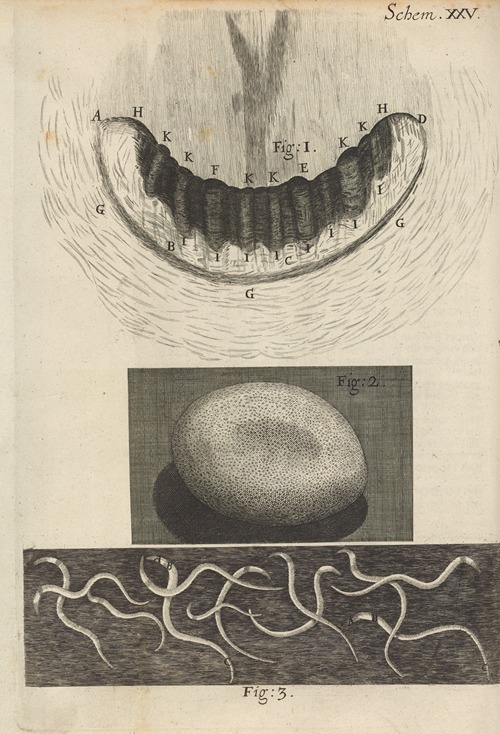
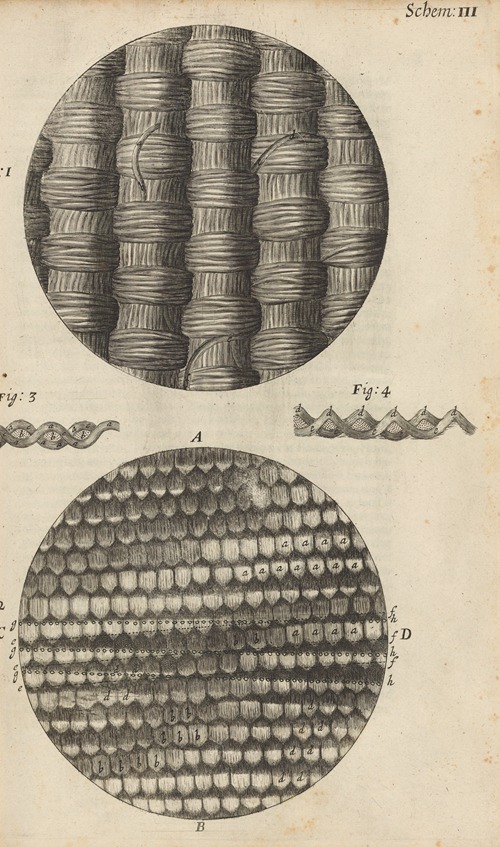
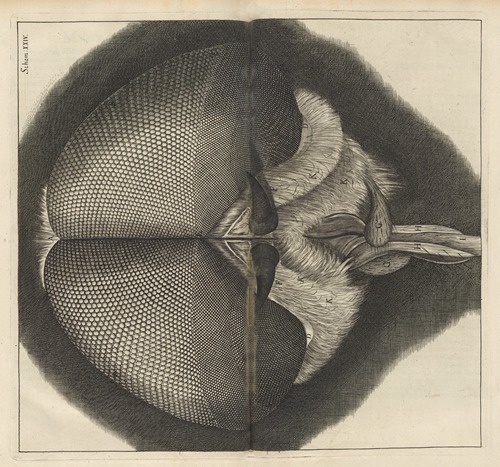
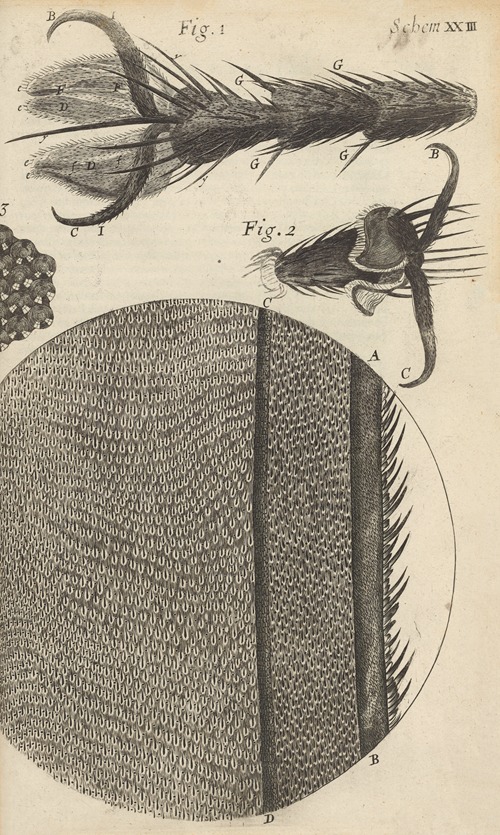
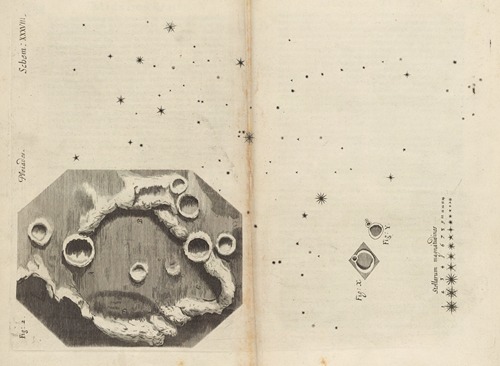
![Microscopic view of a white featherwing’d [feather-winged] moth](https://mdl.artvee.com/ft/916702il.jpg)
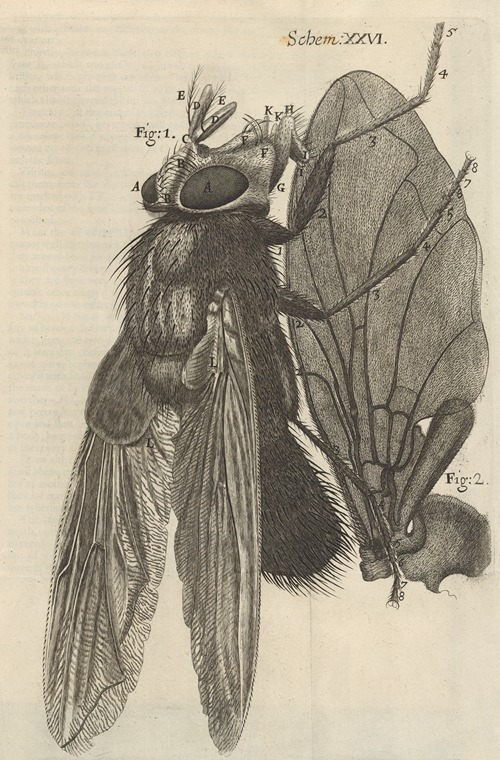
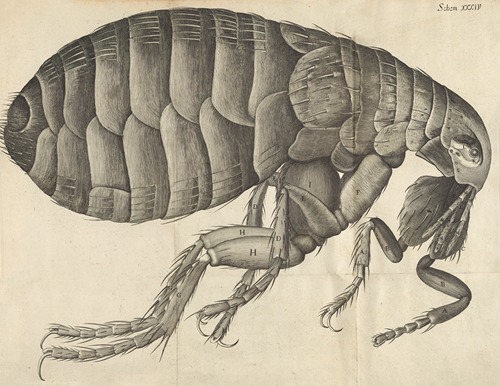
![Microscopic view of a great belly’d [bellied] gnat or female gnat](https://mdl.artvee.com/ft/916697il.jpg)
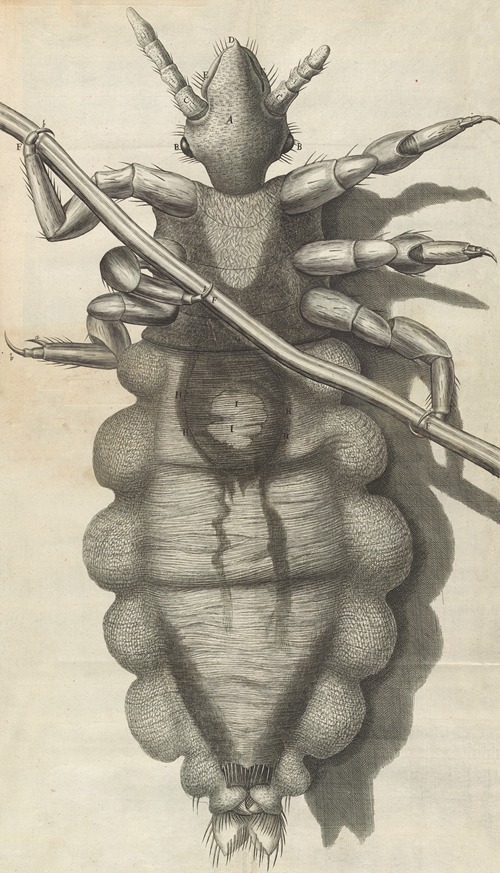
![Microscopic view of a tuft’d [tufted] or brush-horned gnat](https://mdl.artvee.com/ft/916700il.jpg)
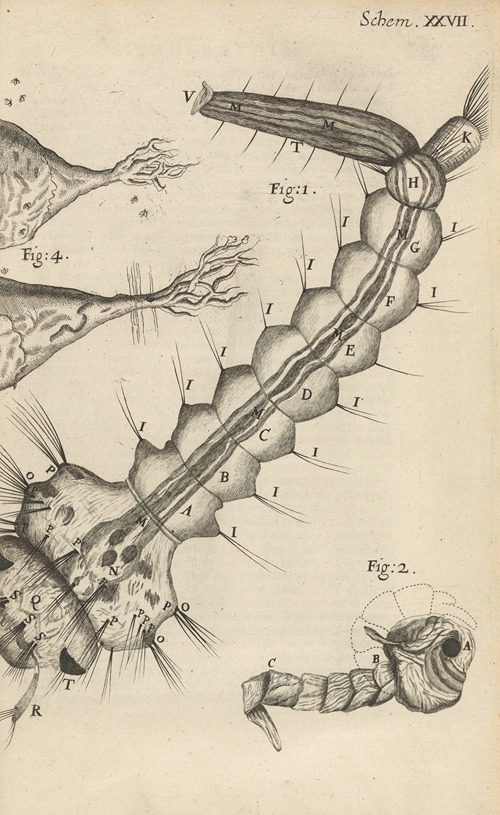
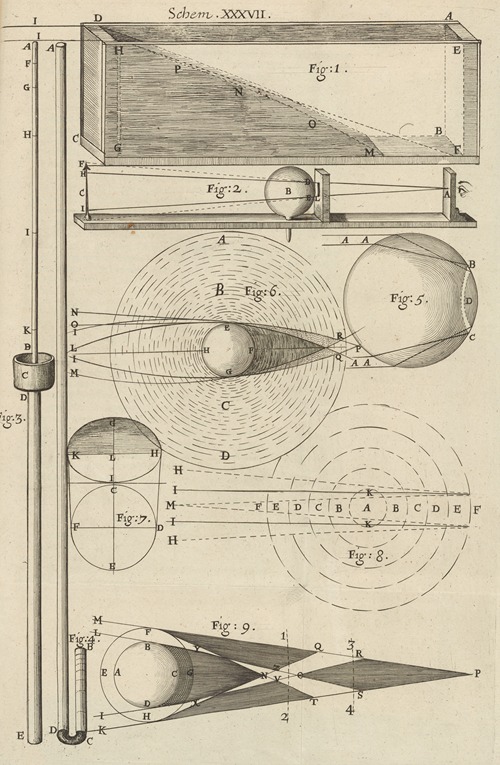
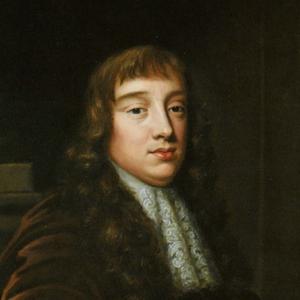

Robert Hooke FRS was an English polymath active as a scientist, natural philosopher and architect, who is credited to be one of the first two scientists to discover microorganisms in 1665 using a compound microscope that he built himself, the other scientist being Antonie van Leeuwenhoek in 1674. An impoverished scientific inquirer in young adulthood, he found wealth and esteem by performing over half of the architectural surveys after London's great fire of 1666. Hooke was also a member of the Royal Society and since 1662 was its curator of experiments. Hooke was also Professor of Geometry at Gresham College.
As an assistant to physical scientist Robert Boyle, Hooke built the vacuum pumps used in Boyle's experiments on gas law, and himself conducted experiments. In 1673, Hooke built the earliest Gregorian telescope, and then he observed the rotations of the planets Mars and Jupiter. Hooke's 1665 book Micrographia, in which he coined the term "cell", spurred microscopic investigations. Investigating in optics, specifically light refraction, he inferred a wave theory of light. And his is the first recorded hypothesis of heat expanding matter, air's composition by small particles at larger distances, and heat as energy.
In physics, he approximated experimental confirmation that gravity heeds an inverse square law, and first hypothesised such a relation in planetary motion, too, a principle furthered and formalised by Isaac Newton in Newton's law of universal gravitation. Priority over this insight contributed to the rivalry between Hooke and Newton, who thus antagonized Hooke's legacy. In geology and paleontology, Hooke originated the theory of a terraqueous globe, disputed the literally Biblical view of the Earth's age, hypothesised the extinction of species, and argued that fossils atop hills and mountains had become elevated by geological processes. Thus observing microscopic fossils, Hooke presaged the theory of biological evolution. Hooke's pioneering work in land surveying and in mapmaking aided development of the first modern plan-form map, although his grid-system plan for London was rejected in favour of rebuilding along existing routes. Even so, Hooke was key in devising for London a set of planning controls that remain influential. In recent times, he has been called "England's Leonardo".













![Microscopic view of small diamants [diamonds]](https://mdl.artvee.com/ft/916724il.jpg)





![Microscopic view of a white featherwing’d [feather-winged] moth](https://mdl.artvee.com/ft/916702il.jpg)


![Microscopic view of a great belly’d [bellied] gnat or female gnat](https://mdl.artvee.com/ft/916697il.jpg)

![Microscopic view of a tuft’d [tufted] or brush-horned gnat](https://mdl.artvee.com/ft/916700il.jpg)

